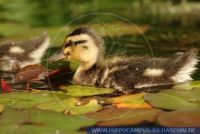Anas platyrhynchos
Mallard
Exif Keywords: Natur, Nature, Animals, Tiere, Fauna, Voegel, Vogel, Bird, Fliegen, Fly
Exif ImageDescription: Anas platyrhynchos, Stockente, Mallard
The Mallard (Anas platyrhynchos, also known as the wild duck, is a dabbling duck which breeds throughout the temperate and sub-tropical areas of North America, Europe, Asia, and Australia....It is strongly migratory in the northern parts of its breeding range, and winters farther south; it is one of the species to which the Agreement on the Conservation of African-Eurasian Migratory Waterbirds (AEWA) applies. It also frequents Central America and the Caribbean, and has been introduced into Australia and New Zealand. It is now the most common duck in New Zealand....The dabbling duck is 56–65 cm length, with an 81–98 cm wingspan, and weighs 750–1,000 g. The breeding male is unmistakable with a green head, black rear end and a blue speculum edged with white, prominent in flight or at rest. Males also possess a yellow bill with a black tip, females dark brown. The female Mallard is light brown like most female dabbling ducks. It can be distinguished from other ducks by the distinctive speculum. In non-breeding (eclipse) plumage, the drake looks more like the female. The Mallard is a rare example of both Allen's Rule and Bergmann's Rule in birds. Bergmann's Rule, which states that polar forms tend to be larger than related ones from warmer climates, has numerous examples in birds. Allen's Rule says that appendages like ears tend to be smaller in polar forms to minimize heat loss, and larger in tropical and desert equivalents to facilitate heat diffusion, and that the polar taxa are stockier overall. Examples of this rule in birds are rare, as they lack external ears. However, the bill of ducks is very well supplied with blood vessels and is vulnerable to cold. The size of the Mallard varies clinally, and birds from Greenland, although larger than birds further south, have smaller bills and are stockier. It is sometimes separated as subspecies Greenland Mallard (A. p. conboschas). The Mallard inhabits most wetlands, including parks, small ponds and rivers, and usually feeds by dabbling for plant food or grazing; there are reports of it eating frogs.[2] It usually nests on a river bank, but not always near water. It is highly gregarious outside of the breeding season and will form large flocks....Mallards form pairs only until the female lays eggs, at which time she is left by the male. The clutch is 8–13 eggs, which are incubated for 27–28 days to hatching with 50–60 days to fledging. The ducklings are precocial, and can swim and feed themselves on insects as soon as they hatch, although they stay near the female for protection. Young ducklings are not naturally waterproof and rely on the mother to provide waterproofing. Mallards also have rates of male-male sexual activity that are unusually high for birds. In some cases, as many as 19% of pairs in a Mallard population are male-male homosexual (Bagemihl 1999).....Source:Wikipedia
Viewed 6722 times









